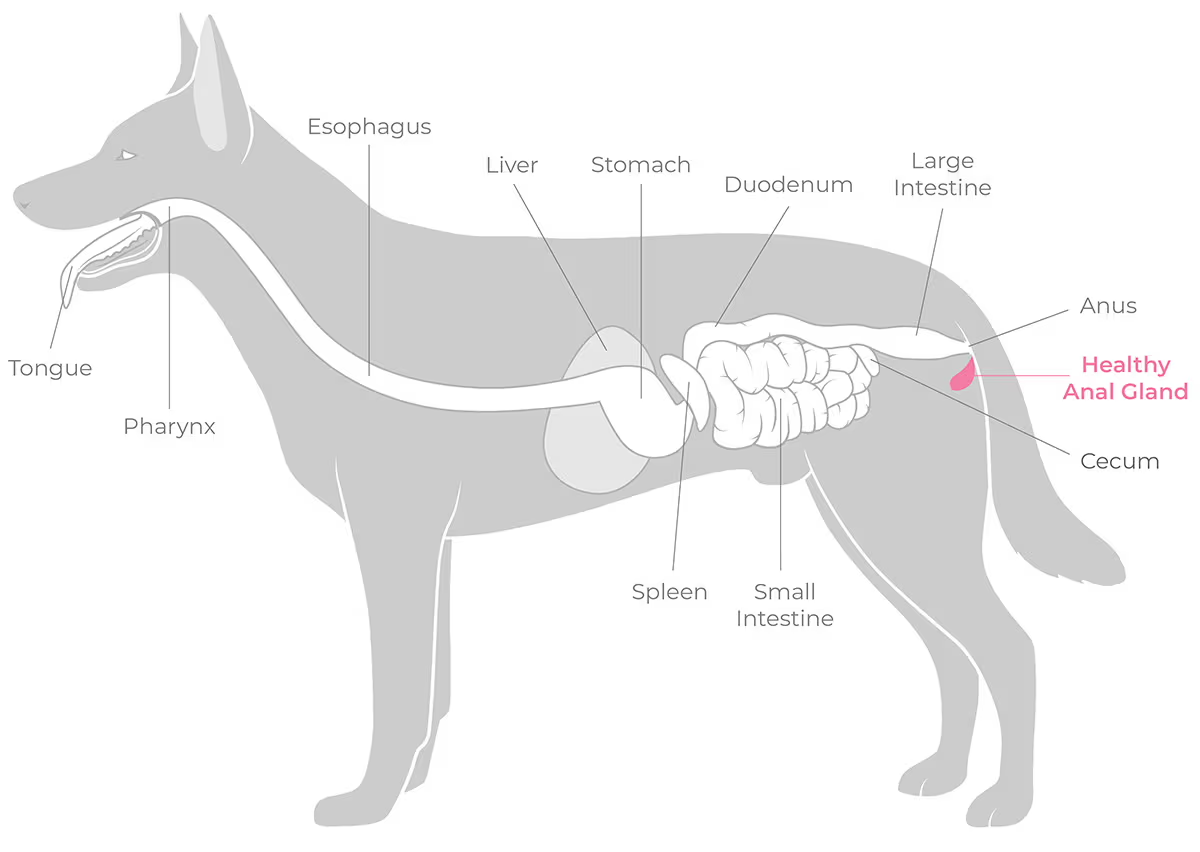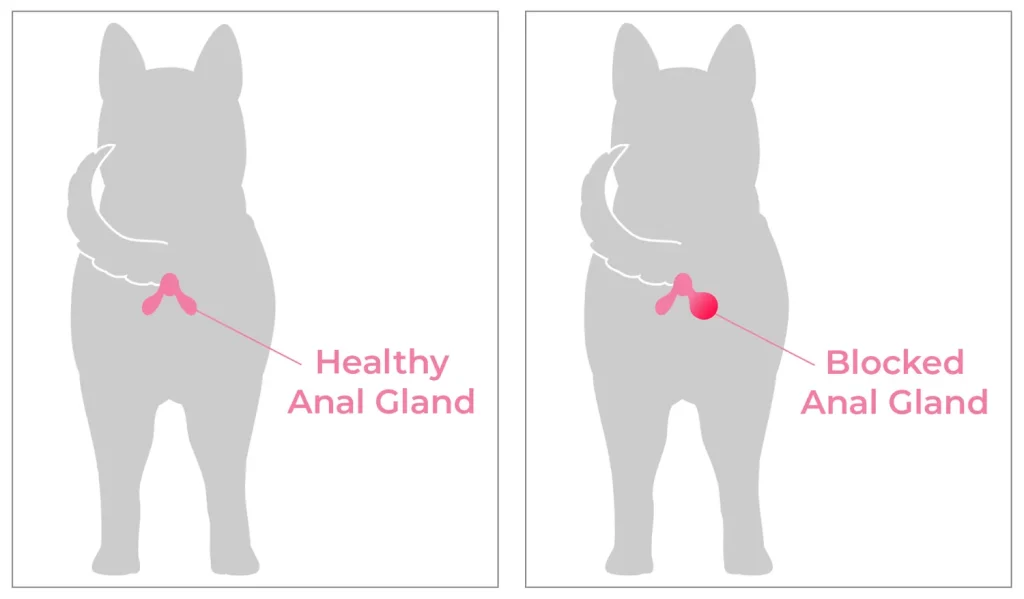You’re sitting at your kitchen table with a few guests then suddenly, your dog starts dragging its bottom across the floor using your clean carpet as it’s very own 3 ply toilet paper.

Dragging also known as ‘scooting’ is not just embarrassing and annoying but it’s a dog’s way of trying to fix something that’s wrong in that area. That might mean an itch, irritation, pain, or other problem that ranges from the mildly uncomfortable to the medically concerning.
You may be wondering, “Why is my dog dragging its bum?”
Common Reasons that cause a dog’s itchy butt
Anal Gland Troubles


One main reason for scooting is when a dog’s anal glands act up. Anal glands, positioned on either side of your dog’s anus, secrete a distinct fluid used for marking territory. These glands should naturally express during bowel movements, but when full, blocked or infected this can make a dog scoot to feel better.
Allergies
Allergies can make a dog’s bottom itchy, leading to scooting. Things like food, pollen, or fleas can trigger this. Watch out for other signs of allergies like scratching or redness.
Intestinal Parasites
Some parasites, like tapeworms, can bug a dog’s back end, making them scoot to ease the itch. Regular deworming can help prevent this.
Skin Infections
Skin infections near the rear end can make a dog scoot to find relief from the itchiness caused by bacteria or fungi.
When to See your Vet?
If you catch your dog scooting now and then, don’t panic and rush to the vet – sometimes they just have an itch to scratch. Keep an eye on them and see how often they do it, but an occasional scoot is usually no big deal.
But if your dog keeps scooting for more than a few days, it might be time for a vet visit. The vet will do a quick rectal exam to check the anal glands for any issues or signs of inflammation. They might also do a faecal exam to look for any pesky intestinal parasites.
If the anal glands seem full or blocked, the vet might need to give them a little squeeze. They’ll help you figure out the root cause of the problem rather than just treating the symptoms by manually expressing the glands.
To help the glands get back to normal, you can try adjusting your dog’s diet, using natural remedies, and giving them some GI anti-inflammatories. Sometimes, using natural lubricants or herbal preparations can also do the trick.
The main goal is to fix the underlying issue and get your dog’s anal glands back on track.
How to Stop Anal Gland Issues
Adding fibre to your dog’s diet can firm up their stools, making it more likely that the glands will be able to express on their own when the dog poops as they empty with the pressure of the stools. You could try adding pumpkin to your dogs’ food. There are also commercial anal gland supplements containing fibre available.
The bottom line is, if your dog scoots once or twice, it may just be an itch or dirty bottom after a trip outside. But if you notice scooting behaviour more frequently, constant licking and biting the rear area, or other signs of swelling or abnormality, take them to the vet right away for an exam. This will allow you to get to the root of the scooting.
